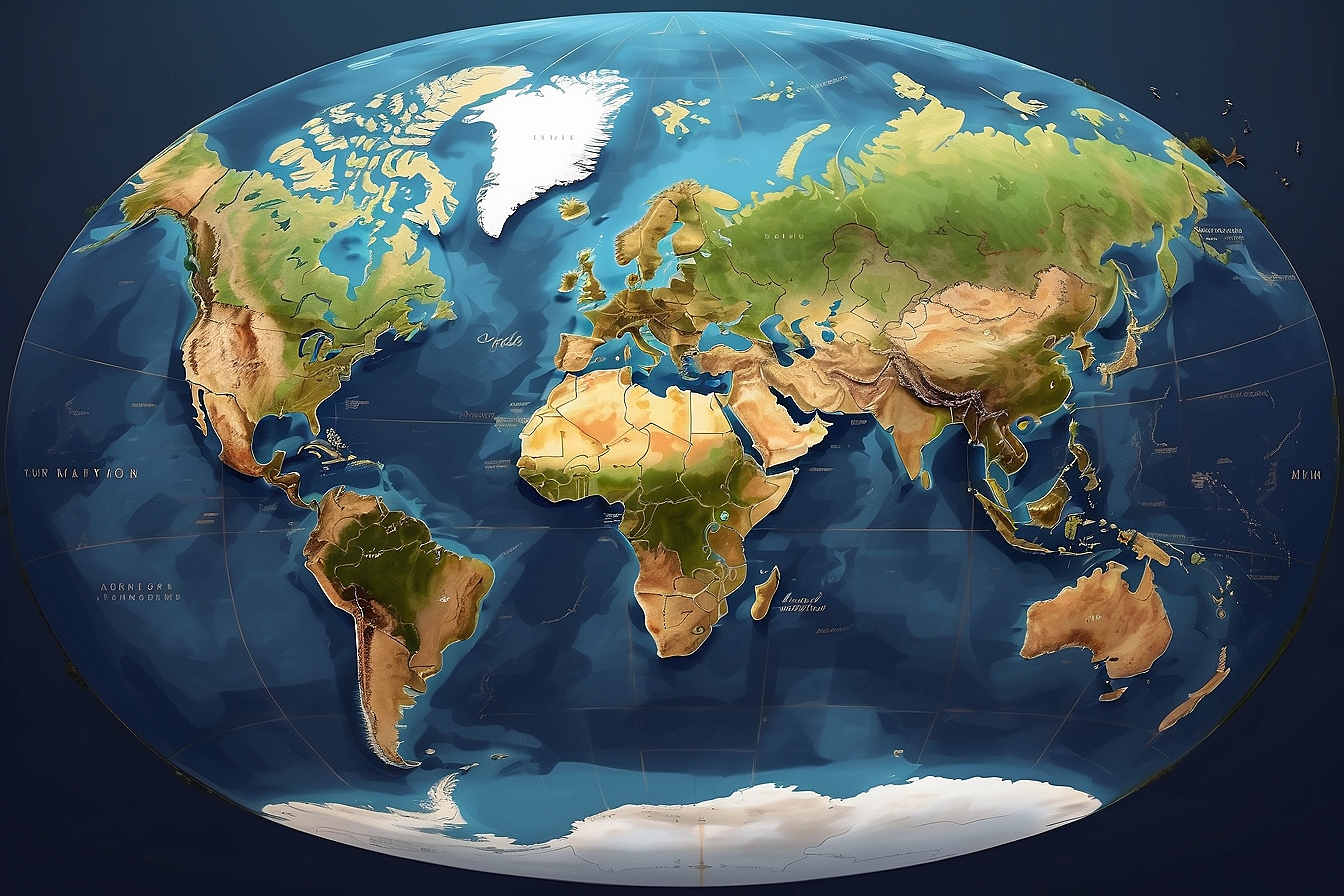
Multilingualism: Why Being Multilingual is Super Cool?
Table of Contents
Imagine you can chat with your abuela in Spanish, order the most delicious gelato in Italian, and even understand the secret jokes whispered by kids on the playground in Japanese. This amazing ability is called multilingualism, and it’s something YOU can learn!
So, what exactly is multilingualism? Multilingualism simply means knowing and speaking more than one language. It’s an awesome skill that opens up doors to endless fun and discovery.
Being multilingual means you can travel the world without leaving your room, make friends from every corner of the Earth, and even unlock the secrets hidden within songs and stories. Studies say that being multilingual can make your brain super strong. It can also help you learn other subjects in school faster and even make you a better problem solver.
Now, let’s unlock the secrets of multilingualism and discover why speaking more than one language is the coolest superpower you can have!
Understanding Multilingualism
Multilingualism is like having a superpower that lets you speak and understand more than one language. It’s the ability to communicate and express yourself in different tongues, opening doors to diverse cultures and communities.
But what exactly does it mean to be multilingual? It’s not just about knowing a few words or phrases. It’s about being able to understand and communicate comfortably in different languages, unlocking a whole new world of possibilities.
Now, you might be wondering how many languages do you need to know to be called “multilingual”? The truth is, there’s no magic number! Even knowing a few phrases in another language makes you a multilingual explorer, and every language you add to your toolkit makes you even more awesome!
Multilingualism vs. Bilingualism
You’ve learned that multilingualism is like having a whole keychain of language keys, unlocking doors to different cultures and experiences. But what about bilingualism? Is it the same thing, or is there a difference between these two language superpowers?
Bilingualism is like being a double agent, speaking two languages fluently and switching between them like a pro. You can chat with your grandma in Spanish and order pizza in English with equal ease. Bilingualism is amazing, and it’s the first step on the path to multilingualism.
Multilingualism, on the other hand, is like having a whole toolkit of keys! You’re not just comfortable with two but with three, four, or even more languages.

Advantages of Multilingualism: The Perks of Being Multilingual
Multilingualism isn’t just about knowing more words; it’s about unlocking a whole world of possibilities, boosting your brainpower, and connecting with people from all walks of life. Speaking more than one language is not just cool; it comes with a bunch of fantastic advantages.
Here are some of the perks of being multilingual.
1. Super Communication Skills
Multilingual people are like communication wizards. They can switch between languages effortlessly, making it easy to connect with different people. It’s like having a secret code for understanding the world!
2. Worldwide Friendships
Imagine making friends with kids from all over the world, sharing stories, jokes, and adventures in their own languages. Multilingualism opens doors to friendships around the world, letting you connect with people on a deeper level than ever before.
3. Brain Boost
Learning multiple languages is like a brain workout, making it stronger and more flexible. Studies show that multilingualism improves memory, attention, and even your ability to multitask. You’ll be able to remember more information, recall details faster, and even learn new things more easily.
4. Cultural Connection
Learning a language is like stepping into a different world. You gain a deeper appreciation for different cultures, traditions, and ways of thinking. Being multilingual makes you a more open-minded and adaptable person, ready to embrace the beauty of diversity.
5. Job Opportunities Galore
Speaking multiple languages is a massive plus in the job market. It can open doors to good career opportunities, boost your earning potential, and make you a more competitive candidate in any field. Many companies prefer employees who can communicate with international clients or colleagues.
6. Easy Travel Mode
Knowing the local language turns any trip into an adventure. You can order delicious food without pointing at pictures, ask for directions like a pro, and even understand the funny signs and jokes you encounter. Imagine exploring a new city with confidence and ease; that’s the multilingual traveller’s advantage!
7. Boost in Confidence
Mastering a new language is a huge accomplishment! It builds self-confidence, encourages perseverance, and teaches you valuable life skills like discipline and adaptability.
8. Lifelong Learning Fun
Learning languages is a lifelong adventure. It’s like having a never-ending quest for knowledge, discovering new words, expressions, and ways of thinking. It helps you stay mentally young and engaged throughout your life.
Examples of Multilingual Countries
Let’s take a trip around the world to discover some countries where speaking more than one language is the norm and where people effortlessly switch between languages.
Switzerland
In this enchanting land nestled in the heart of Europe, people speak not one, not two, but four official languages! They are German, French, Italian, and Romansh.
India
In India, the land of vibrant colours and cultures, it’s common to hear a mix of Hindi, English, Bengali, Telugu, and many more. It boasts a whopping 22 officially recognised languages.
South Africa
Venture to the southern tip of Africa, where a rainbow nation emerges. South Africa dazzles with eleven official languages: English, Afrikaans, isiZulu, Xhosa, Sesotho, Tswana, Sepedi, Setswana, siSwati, and Nama/Khoe.
Belgium
Nestled in the heart of Europe, Belgium is a linguistic kaleidoscope. It embraces three official languages: Dutch, French, and German. Wander through Brussels, and you might find yourself in a lively conversation that effortlessly switches between languages.
Singapore
This Southeast Asian island nation is a melting pot of cultures and languages. It embraces four official languages: English, Mandarin Chinese, Malay, and Tamil.
Papua New Guinea
Papua New Guinea, with over 800 languages, takes the crown as one of the most linguistically diverse places on Earth. Each community has its unique linguistic treasure!
Bolivia
This Andean country boasts a beautiful blend of indigenous and European languages. Spanish is the official language, but the indigenous population widely speaks Quechua and Aymara.

How To Become a Multilingual? Tips for Learning New Languages
Becoming multilingual is an exciting adventure that opens doors to new cultures, perspectives, and connections. While it requires some dedication and effort, the rewards are truly enriching.
Here are some steps to guide you on your journey.
1. Choose Your Language(s)
- Consider your interests: What cultures do you find fascinating? What subjects are you passionate about? Choosing a language that matches your interests will make learning more enjoyable.
- Consider your goals: Do you want to be conversational, fluent, or read literature? Your goals will determine the intensity and approach of your learning.
- Research resources: Explore the availability of learning materials, online communities, and potential travel destinations for your chosen language.
2. Choose your path
- Formal learning: Enroll in language courses, join online platforms, or hire a tutor. These structured approaches provide a solid foundation and expert guidance.
- Informal learning: Immerse yourself in the language through daily interactions. Watch movies and TV shows with subtitles, listen to music and podcasts, and converse with native speakers. This can be a fun and engaging way to pick up vocabulary and pronunciation.
- Self-guided learning: Explore apps, websites, and language learning resources like Duolingo or Memrise. This flexible approach helps you learn at your own pace and focus on areas of interest.
3. Make it a daily habit
- Consistency is key: Dedicate regular time for practice, even if it’s just 15 minutes a day. Consistency is more important than long, infrequent sessions.
- Incorporate it into your life: Label objects around your house, listen to language-learning podcasts while commuting, or read news articles in your target language. Integrate language into your daily routines.
- Find a study buddy: Partner up with a friend or online community for accountability and shared learning experiences. Discussing challenges and celebrating successes can be motivating.
4. Embrace the mistakes
- Learn from your mistakes: Don’t shy away from making mistakes. They are opportunities to learn and improve. Consider them stepping stones on your path to fluency.
- Start small and build: Don’t overwhelm yourself. Begin with basic greetings, common phrases, and everyday vocabulary. Celebrate your progress, no matter how small, to keep yourself motivated.
- Don’t be afraid to speak: Confidence is key! Start with simple phrases and conversations, even if you stumble. The more you practice, the more comfortable you’ll become.
5. Enjoy the journey
- Make it fun: Try to make language learning enjoyable. Play games, watch interesting videos, or listen to music in your target language. The more you enjoy it, the more likely you are to stick with it.
- Connect with the culture: Immerse yourself in the culture associated with the language you’re learning. Watch movies, listen to music, try traditional food, and celebrate cultural festivals. This will strengthen your understanding and appreciation of the language.
- Never stop exploring: The beauty of language learning is that it’s a lifelong journey. Keep challenging yourself, explore new languages, and never stop learning and growing.
Finally, don’t be afraid to ask for help! Seek out resources, join online communities, and connect with native speakers. Surround yourself with people who can support you on your journey.
Experiment, find what works for you, and most importantly, have fun! With dedication and perseverance, you’ll be amazed at how far you can go in learning new languages.

Tips for Parents and Educators: How Can You Help?
Parents and educators can greatly influence teaching kids new languages. They can create an environment that encourages language learning and celebrates the rich languages and cultures around the world.
Here are some tips for parents and educators to help kids learn new languages.
Encourage Curiosity
Foster a sense of curiosity about different languages. Introduce kids to stories, books, or movies from various cultures to spark their interest in learning new words.
Celebrate Progress
Celebrate small victories! Whether it’s correctly pronouncing a challenging word or remembering a phrase, acknowledging achievements boosts a child’s confidence and enthusiasm for learning.
Language Playtime
Infuse language learning into playtime activities. Use multilingual toys, games, or apps designed for language exploration. Learning becomes seamless when it’s part of enjoyable moments.
Create Language Corners
Designate specific corners or spaces in classrooms or homes for different languages. Decorate each corner with items related to that language, creating immersive environments that make learning fun.
Interactive Learning Tools
Leverage technology with interactive language-learning apps or online platforms designed for kids. Many apps use games, songs, and colourful visuals to make the learning experience interactive and enjoyable.
Language Exchange Events
Organise language exchange events where kids can interact with peers who speak different languages. It’s an opportunity for real-life language practice and cultural exchange.
Be Patient and Supportive
Learning multiple languages can be challenging, so it’s crucial to be patient and supportive. Encourage kids to embrace the learning process and emphasise that making mistakes is part of the journey.
Cultural Celebrations
Incorporate cultural celebrations into the learning experience. Explore festivals, traditions, and customs associated with different languages, bringing an immersive and holistic understanding of multilingualism.
The World Awaits!
Now, it’s your turn to embark on your own language adventure. This journey may not be easy, but it’s most definitely worth it. Immerse yourself in different cultures, connect with native speakers, and let the language flow. Remember, the more languages you know, the more doors you open and the more hearts you touch.
If you’re excited about being multilingual, why not start with simple and easy steps, like learning the Arabic alphabet, a glimpse of the Japanese language, or the Chinese alphabet? You can find many resources on LearningMole to help you kickstart.


Leave a Reply